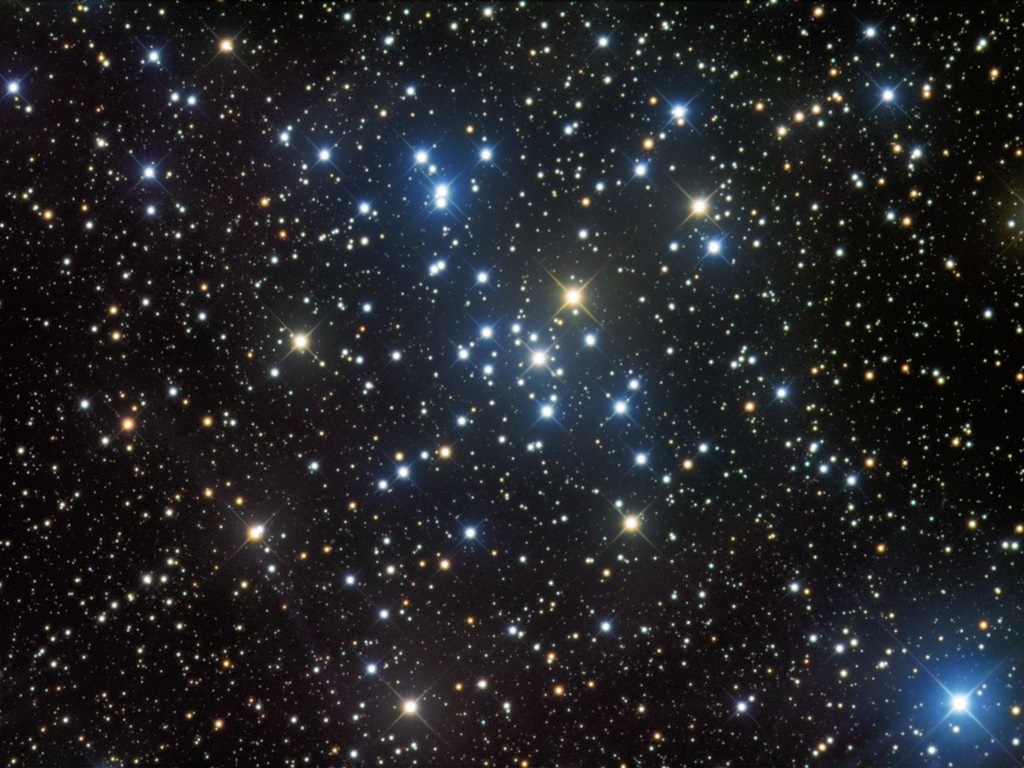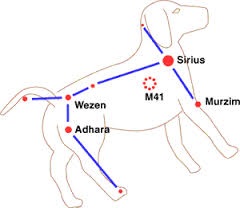
Most of the constellations are derived from Latin, Greek and Arabic phrases or words. There is one such constellation which is known and derived from various terms and is accordingly called or referred to by various names in different countries. It is Canis Major. Canis Major is a constellation in the southern hemisphere and represents one of the two dogs, one that follows Orion the hunter. It is derived from the Greek word ‘seirios’ which means ‘glowing or scorching’, from the Arabic word meaning ‘leader’, from the Sanskrit word meaning ‘deer hunter’, the Scandinavian countries call it ‘Lokabrenna’ meaning ‘Loki’s torch, the Japanese call it ‘Aoboshi’ which means ‘blue star’ and so on. It was catalogued in the 2nd century by the Greek astronomer Ptolemy and belongs to the Orion family of constellations. The constellation is best visible in the month of February at 9 pm.
There are a few notable stars in Canis Major. They are:
- Alpha Canis Majoris: It is a binary star system and is the brightest star in the sky. It is also known as Sirius meaning the ‘Dog Star’. It is the fifth nearest star system to the Sun and is estimated about 200 to 300 million years old. With a magnitude of about 1.42, it is just 8.6 light years distant from the earth.
- Canis Majoris: Another binary star, it is the second brightest star in the constellation and the 24th brightest star in the night sky. It is also known as Adhara meaning ‘virgins’. Its apparent magnitude is about 1.5 and it is approximately 430 light years away from the earth.
- Delta Canis majoris: It is the third brightest star of the system. It is also known as Wezen meaning ‘the weight’. A yellow–white F–type supergiant, it is approximately 1,800 light years distant and has an apparent magnitude of about 1.83.
- Beta Canis Majoris or Murzim: The star is a blue–white giant with brightness that varies between magnitudes 1.95 and 2 respectively. It is approximately 500 light years distant. Also, it is classified as a Beta Cephei variable, which is a star that exhibits variations in its brightness due to the pulsations of its surface.
- Gamma Majoris or Muliphen: It is a blue–white B–type right giant which has an apparent magnitude of about 4.11 and is approximately 402 light years distant.
Tau Canis Majoris: It is the brightest star of the open cluster NGC 2363. This star is also one of the brightest stars in the galaxy. It is an O–type blue supergiant with a varying brightness between magnitudes 4.32 and 4.37 respectively and is about 3,200 light years distant.
Its deep sky objects include:
- Messier 41: It is an open cluster consisting of numerous bright stars, brighter than the sun and within 25 light years of space. It is located about four degrees to the south of Sirius and is at the centre of the cluster. It has an apparent magnitude of about 4.5 and is approximately 2,300 light years distant.
- Canis Major Dwarf Galaxy: Roughly elliptical in shape, it is an irregular galaxy and is believed to be the nearest neighbouring galaxy to the solar system. It is approximately 25,000 light years distant from the earth and is about 42,000 light years away from the Galactic Centre.
- NGC 2359: Also known as Thor’s Helmet, it is an emission nebula which is formed around the central Wolf–Rayet star.
- NGC 2207 and IC 2163: They are colliding galaxies in Canis Major and are approximately 80 million light years distant. They were discovered by the English astronomer John Herschel in the year 1835 and have apparent magnitudes of 12.2 and 11.6 respectively.

Between latitudes +60° and -90°, it is located in the second quadrant of the second hemisphere.

Canis Major occupies an area of 380 square degrees, making it the 43rd biggest constellation in the sky. This constellation is about 8.6 light years away from the earth.
According to a Greek myth, Canis Major is a big dog following Orion the hunter. It is also illustrated as a dog standing on its hind legs following a hare. This hare is represented as the Lepus constellation. Zeus, the king of gods gifted Laelaps (dogs) to Europa, the Cretan moon goddess with a spike. Unfortunately, Europa was accidentally killed with the spike by her husband Cephalus who went hunting with it. Later, Cephalus (a name used for heroic figure in Greek mythology) took laelaps to hunt a troubling fox. This fox was considered to be extremely fast and was fated never to be caught. When the dogs saw the fox, they started chasing it; the chase did not seem to end. When Zeus saw this unending chase, he turned both the animals into stones and placed them in the night sky as a constellation. The dog was named Canis Major and the fox as Canis Minor. In the Roman culture, it was a tradition to sacrifice a brown dog due to the rise of the ‘dog days’ between 24th July and 24th August. They believed that the star rising with the sun is the cause of the unbearable heat during summer and hence, sacrificing a dog would calm down the heat.
The neighbouring constellations of Canis Major are Columba, Lepus, Monoceros and Puppis.
G Kowledge of | 0 Comments >>
0 Comments
Leave Comment
Your email address will not be published. Required fields are marked.